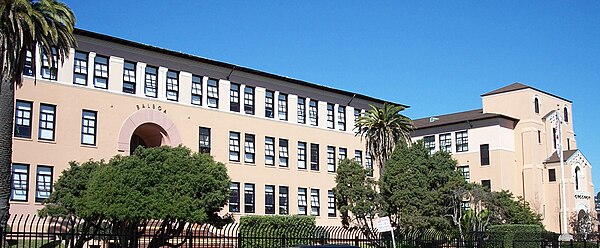
The Richmond District is a neighborhood in the northwest corner of San Francisco, California, developed initially in the late 19th century. It is sometimes confused with the city of Richmond, which is 20 miles (32 km) northeast of San Francisco.

College of San Mateo (CSM) is a public community college in San Mateo, California. It is part of the San Mateo County Community College District. College of San Mateo is located at the northern corridor of Silicon Valley and situated on a 153-acre site in the San Mateo hills. The college currently serves approximately 10,000 day, evening and weekend students. The college offers 79 A.A./A.S. degree majors, 75 certificate programs and approximately 100 transfer areas and majors.

Galileo Academy of Science and Technology, formerly known as Galileo High School, is a public high school located between the Russian Hill and Marina District neighborhoods of San Francisco, California. The school is a part of the San Francisco Unified School District.
Diablo Valley College (DVC) is a public community college with campuses in Pleasant Hill and San Ramon in Contra Costa County, California. DVC is one of three public community colleges in the Contra Costa Community College District. It opened in 1949. DVC has more than 22,000 students and 300 full-time and 370 part-time instructors.

Lowell High School is a co-educational, magnet public high school in San Francisco, California.
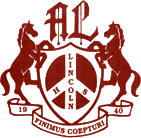
Abraham Lincoln High School (ALHS) is a California Distinguished public high school located in the Sunset District of San Francisco, California. In 2018, ALHS was ranked #499 and earned a gold medal by U.S. News & World Report, placing it in the top 2% of public high schools nationally.

Mission High School is a public high school in the San Francisco Unified School District (SFUSD) San Francisco, California.

San Francisco Unified School District (SFUSD), established in 1851, is the only public school district within the City and County of San Francisco, and the first in the state of California. Under the management of the San Francisco Board of Education, the district serves approximately 49,500 students across 121 schools.

City College of San Francisco is a public community college in San Francisco, California, United States. Founded as a junior college in 1935, the college plays an important local role, enrolling as many as one in nine San Francisco residents annually. CCSF is accredited by the Accrediting Commission for Community and Junior Colleges (ACCJC).

Tamalpais High School is a public secondary school located in Mill Valley, California, in the San Francisco Bay Area. It is named after nearby Mount Tamalpais, which rises almost 2,500 feet (760 m) above Mill Valley.
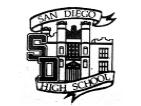
San Diego High School (SDHS) is an urban public high school located on the southern edge of Balboa Park, in San Diego, California, United States. It is the oldest high school in the San Diego Unified School District, one of the oldest public schools in all of California, and the oldest still on its original site.

The Ruth Asawa San Francisco School of the Arts, is a public alternative high school in San Francisco, California, United States. It was established in 1982 and is part of the San Francisco Unified School District. It is currently located at 555 Portola Drive, San Francisco CA 94131.
Leadership High School is a public charter high school located in San Francisco. Founded in 1997, Leadership or "LHS" was California's first start-up charter high school. The school provides a college-preparatory curriculum and focuses on leadership development and social justice.
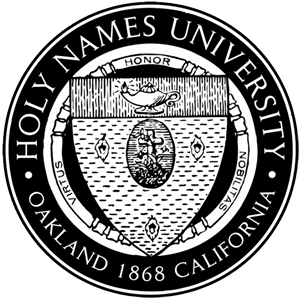
Holy Names University was a private Roman Catholic university in Oakland, California. It was founded in 1868 by the Sisters of the Holy Names of Jesus and Mary with which the university remained affiliated until it closed in 2023.

Cardinal Newman High School is an American Catholic high school located in Santa Rosa, California. The school was originally for boys, but shared some facilities with Ursuline High School for girls; it has been coeducational since Ursuline's closure in 2011. Its colors are Cardinal Red and Gold; its mascot is the cardinal. It is located in the Roman Catholic Diocese of Santa Rosa in California.
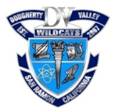
Dougherty Valley High School is a public high school located in the Windemere development of San Ramon, California, United States. The valley name comes from James Witt Dougherty, a 19th-century landowner and local politician.
The San Francisco Board of Education is the school board for the City and County of San Francisco. It is composed of seven Commissioners, elected by voters across the city to serve 4-year terms. It is subject to local, state, and federal laws, and determines policy for all the K-12 public schools in the San Francisco Unified School District.
Mark Sanchez is an American politician in San Francisco, California. He was on the San Francisco Board of Education from 2001 to 2009, and served as president of the board from 2007 to 2009. Sanchez lost a 2008 election for the San Francisco Board of Supervisors in District 9. He was again elected to the San Francisco Board of Education in 2016. He was elected President of the Board in 2020, having been vice president since 2018.

The CIF San Francisco Section (CIF-SF), frequently shortened to SFS or just SF, is the governing body of high school sports for school for what was originally the San Francisco Unified School District. It is one of ten sections that comprise the California Interscholastic Federation (CIF). The SFS is also known under the league name Academic Athletic Association, and is the only CIF section not divided into several leagues. While the league currently includes ICA Cristo Rey and Lycee Francais, most other parochial schools located within the borders of San Francisco; Archbishop Riordan High School, Sacred Heart Cathedral Preparatory and Saint Ignatius College Preparatory ; and Lick-Wilmerding High School. Sacred Heart Cathedral, Saint Ignatius, and Lick-Wilmerding were all previous members of the CIF SF Section before joining their current CIF Sections.

Ida B. Wells Continuation High School is a public high school in San Francisco, California, located on Alamo Square near the Hayes Valley neighborhood. The school belongs to the San Francisco Unified School District, where it is one of two continuation high schools.


